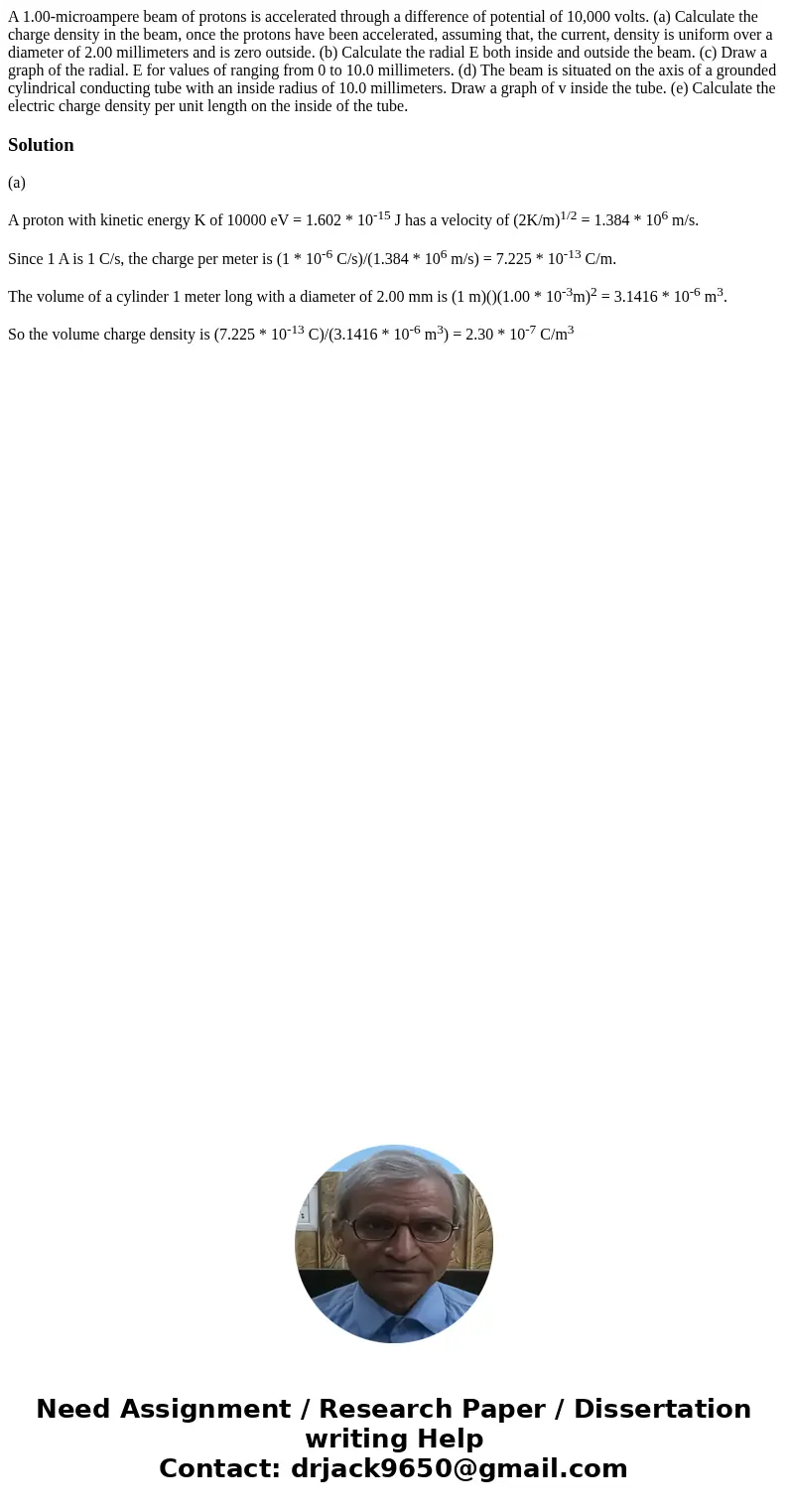A 100microampere beam of protons is accelerated through a di
A 1.00-microampere beam of protons is accelerated through a difference of potential of 10,000 volts. (a) Calculate the charge density in the beam, once the protons have been accelerated, assuming that, the current, density is uniform over a diameter of 2.00 millimeters and is zero outside. (b) Calculate the radial E both inside and outside the beam. (c) Draw a graph of the radial. E for values of ranging from 0 to 10.0 millimeters. (d) The beam is situated on the axis of a grounded cylindrical conducting tube with an inside radius of 10.0 millimeters. Draw a graph of v inside the tube. (e) Calculate the electric charge density per unit length on the inside of the tube.
Solution
(a)
A proton with kinetic energy K of 10000 eV = 1.602 * 10-15 J has a velocity of (2K/m)1/2 = 1.384 * 106 m/s.
Since 1 A is 1 C/s, the charge per meter is (1 * 10-6 C/s)/(1.384 * 106 m/s) = 7.225 * 10-13 C/m.
The volume of a cylinder 1 meter long with a diameter of 2.00 mm is (1 m)()(1.00 * 10-3m)2 = 3.1416 * 10-6 m3.
So the volume charge density is (7.225 * 10-13 C)/(3.1416 * 10-6 m3) = 2.30 * 10-7 C/m3

 Homework Sourse
Homework Sourse